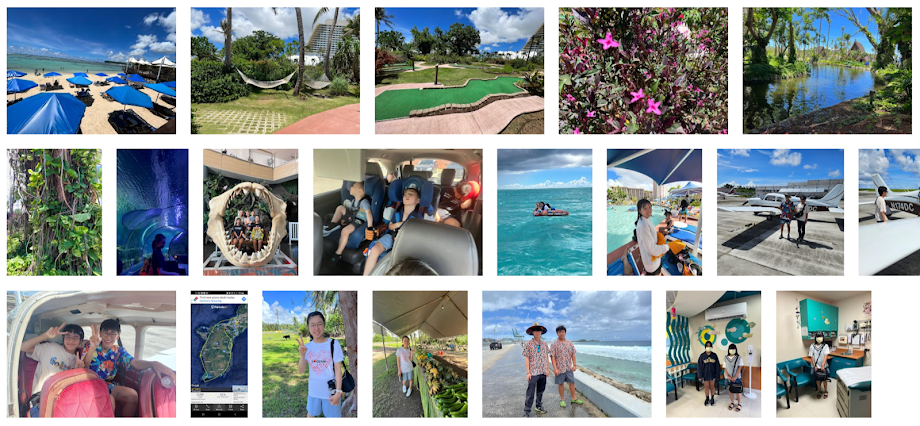
P.O. Box 12961 Tamuning, Guam 96931
Purpose
The Guam Nikkei Association was chartered in 2012 with the primary purpose of perpetuating the history and lineages of those born from Japanese ancestry who are presently bona fide residents of Guam; educate the community about the impact and contribution of first generation Japanese and their descendants on the social economic fabric of Guam and to inculcate Japanese culture, art, traditions and history to succeeding generations of Japanese-Chamorro-Guamanians. The Association shall also conduct classes, lectures, demonstrations, performances, seminars, exchange programs, travel to Japan and elsewhere, and organize community events as a means of promoting the purposes of the organization. Additionally, the Guam Nikkei Association shall seek grants, contributions and to operate fund raising activities that will provide the necessary resources to achieve the purposes of the organization.
Okayama Student Exchange Photos & Videos
GNA Hosts Panel
Guam Nikkei Association Hosts Panel on A Borrowed Land
The Guam Nikkei Association successfully hosted a panel discussion on A Borrowed Land, a groundbreaking publication by Peter R. Onedera that documents the experiences of Japanese Issei and Nissei in Guam during World War II. Held on March 29, 2025, at the Central Community Arts Center in Sinajana, the event was a collaboration with NHK Japan Broadcasting Corporation as part of their coverage of the 80th anniversary of WWII’s end.
Moderated by Guam Nikkei Association President David Okada and facilitated by the author, the panel featured prominent community members. Guam Nikkei Association Board Chairman Frank S.N. Shimizu delivered the welcome remarks, and Deputy Consul General Yoshiko Kobayashi attended as an observer.
NHK conducted interviews with Onedera and members of the Japanese/CHamoru community to document their stories, culminating in a five-minute segment to be aired on NHK’s English and Japanese language channels in commemoration of this historic milestone.
Board Chairman Frank S.N. Shimizu Delivers Welcome Remarks
MARK YOUR CALENDAR
GENERAL MEMBERSHIP MEETING:
Date: September 16, 2025
Time: 6:00 p.m.

Meeting with Consul General

Okayama Student Exchange Program
The Okayama Student Exchange program allowed students from Okayama, Japan, to come to Guam to help students learn about Guam’s culture and to improve their English skills. Thank you to the host families! The students were able to participate in a variety of meaningful cultural activities, such as visiting the Consul General and going to CHamoru Village, Three Squares restaurant, Karera cultural show at Sand Castle, Inarajan Falls, Mt. LamLam, Vitale’s Italian Restaurant, Cetti Bay, Tao Tao Tasi show, Two Lovers Point, Meskla Dos, the beach, jet skiing, water park, Underwater World, Jeff’s Pirates Cove, shopping, GPO theaters, special airline flight, and more. They made great new friends and learned so much about Guam’s culture! Enjoy the following Okayama Student Exchange snapshots!
Congratulations, GNA, on your 10th Anniversary!
GNA Chairman Frank Shimizu Conferred with Imperial Decoration
2021 VISE STUDENT PRESENTATION
JET PROGRAM
The Japan Exchange & Teaching (JET) Program offers graduates with exciting professional opportunities to work in Japan as Assistant Language Teachers or Coordinators for International Relations. Since 1987, more than 60,000 JET Program participants from over 40 countries have lived and worked in cities, towns and villages throughout Japan.
Marianas Business Journal Feature
Featured GNA Video
2016 Guam Proa Lantern Floating Ceremony Video Available on YouTube
































































No comments:
Post a Comment